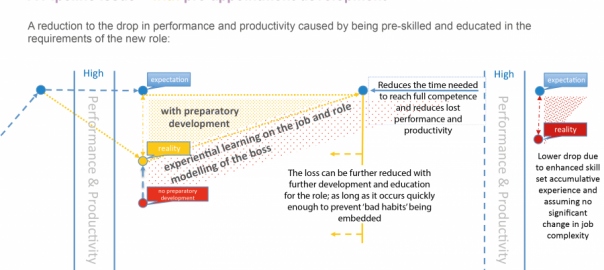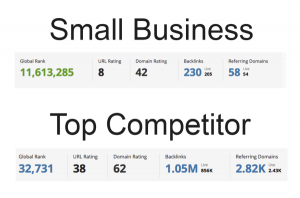The Peter Principle, a premise determined by Laurence J Peter – is that anything that works will be used in progressively more challenging applications until it fails. This is ‘the Generalised Peter Principle.’ Based on observation of human behaviour, it was determined that there is normally the temptation to use what has worked before, even when it may exceed its effective scope. (It is the easy and often quickest solution!)
In Business
In an organisational structure, assessing an employee’s potential for a promotion is often based on their performance in the current job. This eventually results in them being promoted to their highest level of competence and potentially then to a role in which they are not competent, referred to as their ‘level of incompetence’. The employee has no chance of further promotion, and has now reached their career ceiling in the organisation.
(We have continued to use what (who) has worked best before, in a role beyond their effective scope!)
Laurence Peter goes on to suggest that: “In time, every post tends to be occupied by an employee who is incompetent to carry out its duties” and that “work is accomplished by those employees who have not yet reached their level of incompetence.”
Peter coined the term ‘hierarchiology’ as the social science concerned with the basic principles of hierarchically organised systems in human society that he observed reflect his core premise.
He went on to report that a person’s incompetence may be because the required skills are different, but not necessarily more difficult;
For example, an excellent call centre agent may be a poor team leader because they do not have the interpersonal skills necessary to lead a team.
I see this happening with fairly high frequency as people are promoted into new roles as they travel through the *leadership pipeline. Then, once they have been promoted to their level of incompetence, rather than seeking to promote a talented “super-competent” Individual Contributor – Peter suggests that they may set them up to fail, or seek to dismiss them, because they are likely to “violate the first commandment of hierarchical life with incompetent leadership”: namely, that the hierarchy and ‘my’ place within it, must be preserved.
In most organisations someone’s development for a new job, especially in management/leadership positions, normally comes ‘after the fact’, if at all (see diagram 1). When this happens we are potentially compounding the impact of the Peter Principle in our organisations – hoping that newly appointed individuals learn enough through ‘on the job’ experience and the role models around them – to increase their capability, performance and productivity, in the new role. This ‘hope’ ignores the likelihood that the individual may be learning the wrong things from their experience or that they may have poor role models around them – which compounds over time – impacting performance, productivity, employee engagement and morale.

Mitigating the Peter Principle
There are a couple of things we can do to mitigate the impact of the Peter Principle in our organisations:
1. Appoint people to positions of authority and further elevate those who have an aptitude for, and the capacity to learn; the new skills, knowledge, understanding and behaviours necessary for the new role – this skill set may need to be broader and deeper than any defined leadership competency framework that exists in the organisation.
Do not appoint on the basis of ‘they are the best at what they do now’ – the best appointment from within your team/recruitment group may only be an average performer as an Individual Contributor or Manager of IC’s – but be excellent as a Manager of IC’s or Manager of Managers!
2. Regardless of who you appoint, if at all possible ensure they are trained and developed in advance of taking up their new role – not post appointment. Even if they learn the right things from their new experiences and are surrounded by good role models, it will take longer for them to reach the level of performance you expected of them at the time of appointment. (See diagram 2)

Development ‘after the fact’ does work. It can help mitigate the level at which an individual’s incompetence manifests. However, there will still be a lag in how long it takes for them to reach full competency in the new role. The smaller the gap between appointment and development the shorter the performance lag is. This is when we risk lost productivity/performance and employee motivation.
(When we do develop in advance of appointment there will often still be a lag, but it will be reduced)
*The Leadership Pipeline – Ram Charan
Business & Finance Articles on Business 2 Community(221)








